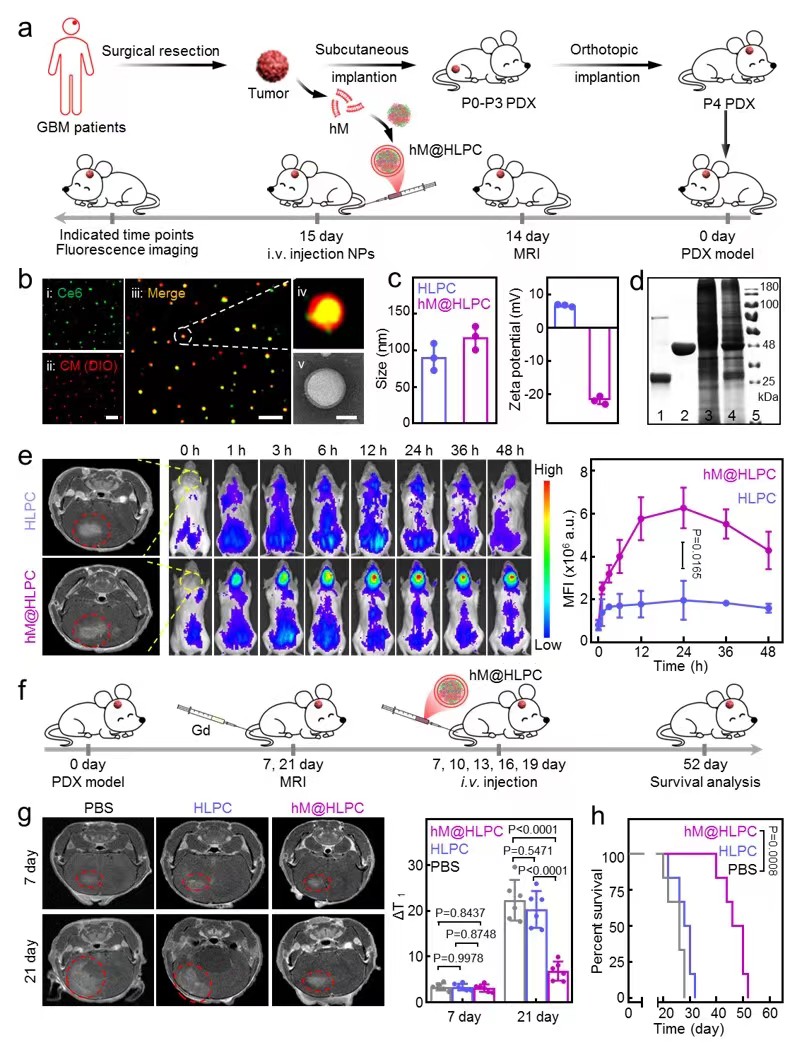Glioblastoma multiforme (GBM) is an aggressive brain cancer with a poor prognosis and few treatment options. New and effective approaches for GBM treatment are therefore urgently needed.
Based on observation of elevated lactate in resected GBM, researchers from the Institute of Process Engineering (IPE) of the Chinese Academy of Sciences and Shenzhen Second People’s Hospital have developed a biomimetic formulation using targeted delivery agents for lactate metabolism-based synergistic therapy against GBM.
The study was published in Nature Communications on July 21 (DOI: 10.1038/s41467-022-31799-y).
In this study, the researchers collected glioma samples from a large cohort of patients and quantified the lactate metabolic indicators LDHA and MCT4 and a representative proliferation marker Ki67.
“We observed a positive correlation between lactate metabolic indicators and the extent of glioma proliferation,” said Prof. LI Weipingfrom Shenzhen Second People's Hospital. Thus, an efficient metabolism-based synergistic therapy was proposed that would directly harness the elevated lactate in GBM.
The researchers fabricated self-assembly nanoparticles (NPs) composed of hemoglobin (Hb), lactate oxidase (LOX), bis[2,4,5-trichloro-6-(pentyloxycarbonyl)phenyl] oxalate (CPPO), and chlorin e6 (Ce6) using a one-pot approach. They subsequently encapsulated these self-assembled NPs with membrane materials prepared from U251 glioma cells to generate the biomimetic M@HLPC system. This design concept was able to achieve targeted delivery for combination therapy.
“After intravenous injection, the M@HLPC could cross the blood brain barrier via transcytosis sourced from integrin and vascular cell-adhesion-protein-mediated recognition, and then accumulated in GBM through homotypic recognition based on cell-recognition-function-associated proteins,” said Prof. WEI Wei from IPE.
In tumors, LOX in the NPs converted lactate into pyruvic acid and hydrogen peroxide (H2O2). The pyruvic acid inhibited cancer cell growth by blocking histone expression and inducing cell-cycle arrest. In parallel, the H2O2 acted as a local fuel to react with the delivered CPPO to release energy, which could then be used by the co-delivered photosensitizer Ce6 for the generation of cytotoxic singlet oxygen to kill glioma cells.
A peer reviewer from Nature Communications said, “The idea of this work is interesting.” Another reviewer emphasized that “a multi-targeting, personalized, smart nanoplatform to tackle glioblastoma multiforme is presented. Rationale is well explained, I indeed appreciate the multi-strategies approach and the biomolecular characterization.”

Fig. 1 Preparation of biomimetic formulation and tumor inhibition mechanism (Image by LU Guihong)

Fig. 2 Evaluation of the synergistic therapeutic effect of personalized biomimetic formulation in PDX model (Image by LU Guihong)
Media Contact:
LI Xiangyu
Public Information Officer
Institute of Process Engineering, Chinese Academy of Sciences, Beijing 100190, P. R. China.
E-mail:xiangyuli@ipe.ac.cn
Tel: 86-10-82544826
 Search
Search




 京公网安备110402500047号
京公网安备110402500047号